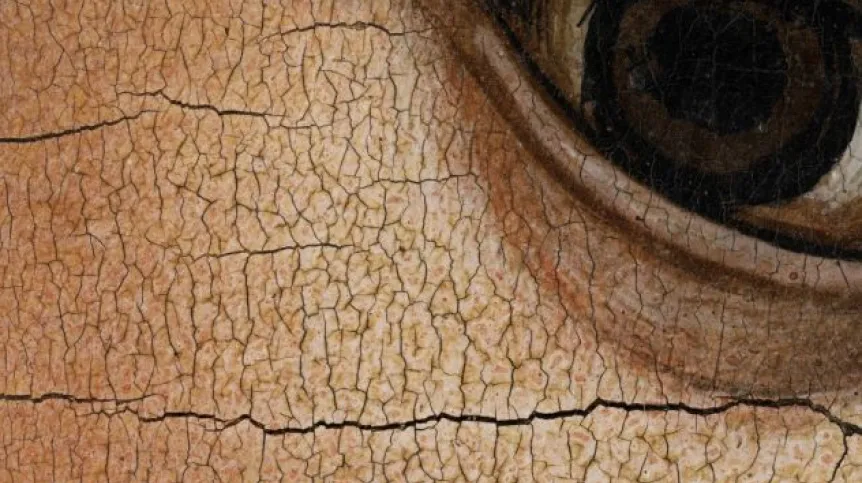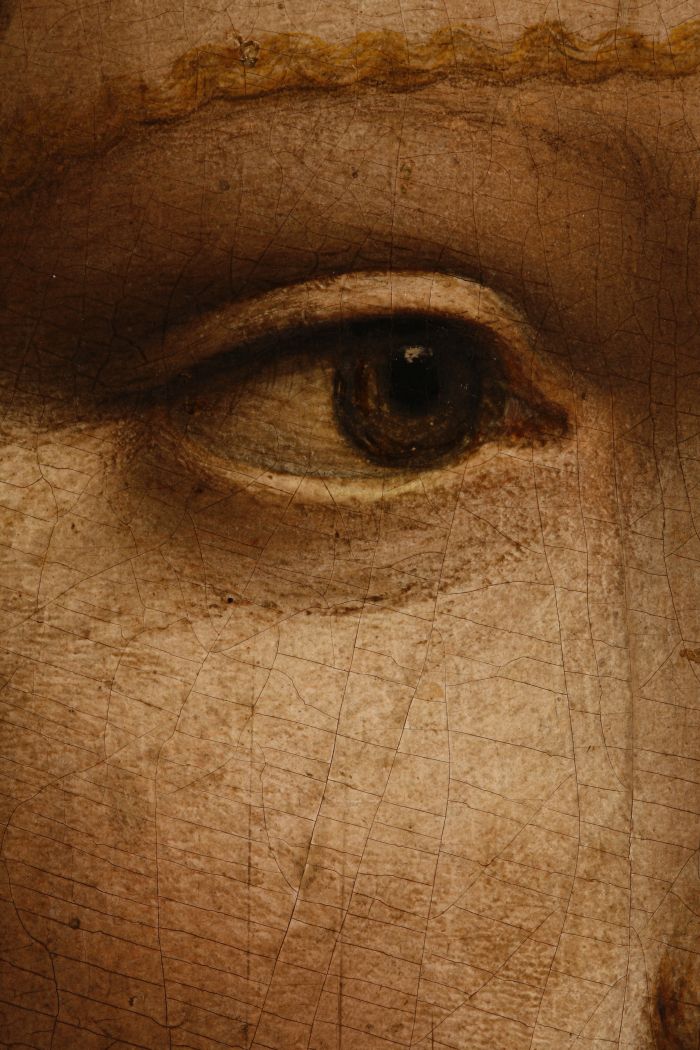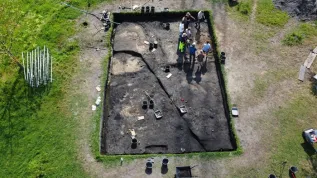
Only a small part of museum collections usually require a stable microclimate. Museums do not have to incur huge costs of maintaining constant temperature and humidity. They can make better use of funds for the protection of works of art, argues a scientist who studies the degradation of cultural heritage.
In developed countries, including Poland, there are often efforts to ensure that museums have stable microclimate conditions: constant temperature and humidity maintained throughout the year. It is assumed that changes in humidity or temperature can lead to irreversible changes in heritage objects, for example cracks in paintings. To ensure a stable microclimate, museums need active climate control systems (air conditioning), which consume a lot of electricity.
Based on his research on the properties of materials used by artists (he studied especially paintings, parchments, paper, furniture and wooden sculptures), Professor Łukasz Bratasz from the Jerzy Haber Institute of Catalysis and Surface Chemistry of the Polish Academy of Sciences, argues that funds for the protection of works of art could be spent better than on high electricity bills.
The results of his research have already been applied. Professor Bratasz and his team developed the concept of climate regulation for the National Archives Warehouse in Kraków. 'The warehouse consumes 15 times less energy than the warehouse of the National Museum in Kraków, and the storage conditions for paper objects are 3-4 times better,’ the scientist says (this means that the chemical degradation processes are 3-4 times slower and, consequently, the 'lifetime' objects is proportionally extended).

According to the researcher, the energy bills in this new building are less than 20,000 PLN per year, while energy bills for similar-sized classic warehouses reach several hundred thousand PLN per year. The scientist says that the warehouse building does not need heating or cooling - but it is so massive that the conditions inside slowly follow the annual cycle. 'There is no need to blow fresh air into the building, which additionally reduces the adverse impact of air pollution on the collections. The only necessary process is air drying. In our climate, air humidity is too high and favours the development of biological hazards,’ he says.
Professor Bratasz also co-created the concept of the Central Warehouse of Museum Collections in Lesznowola. 'We are increasingly realizing that it is rare but catastrophic events that determine the survival of collections. For example, some museums are at a very serious risk of flooding, like the Manggha Museum in Kraków. We know that the warehouses of the Louvre have been moved to Lievin, 200 km from Paris, due to the threat of flooding by the Seine. These are serious challenges. Therefore, when co-creating the concept of the Central Warehouse of Museum Collections in Lesznowola, we analysed all catastrophic risks, but we also made sure that the investment was not expensive and that the building used a minimum amount of energy,’ he says.
He adds that according to the statistics of the State Fire Service, fires break out in Polish museums on average every 76 years. For comparison, in Canada it is every 114 years, and in the USA - every 200 years. Moreover, the number of fires in Poland has doubled over the last 15 years. The risk of fire may therefore be a much greater threat than damage to heritage objects related to climate fluctuations.
The scientist points out that museums and archives take great care to maintain the right microclimate. Meanwhile, such stable microclimatic conditions can no longer be ensured, for example, in churches or historic buildings, which sometimes also house important museums. 'Look at the works of Titian in the churches of Venice - no one is sounding the alarm that they are deteriorating because they do not have active air conditioning. The local conservators assume that cultural heritage objects should be provided with climatic conditions to which these objects have adapted over hundreds of years,’ he adds.
Professor Bratasz's research helps to better understand how the mechanical properties of materials used in works of art change over time, depending on the conditions. As a result, within one theory, it is possible to combine these two conservation approaches to whether to air-condition museums - or not.
'The problem is not whether changes in humidity can destroy objects - because they can. The question is whether heritage objects have been exposed to changes for many years, whether they have adapted to them - and whether these changes are still a threat. Not necessarily, as it turns out that, he says.
'We determine the properties of materials and use this knowledge to build computer models. Then we perform virtual experiments, and verify the results using laboratory experiments or in the conditions of a historic building on objects that imitate real objects.’
The researcher from the Institute of Catalysis and Surface Chemistry PAS shows a 30-year-old sample of oil paint with the addition of a green pigment - verdigris. 'In our scientific research, we have shown how oil paints become more and more rigid, brittle, and shrink over time, which for some of them leads to cracking of the paint layers and the formation of a pattern of dense cracking called craquelure. This is a natural process. Moreover, we have also shown that cracks - caused by the natural chemical evolution of paints or as a result of microclimate fluctuations - develop only up to a certain point, and then they stabilize. This concept - called the acclimatization concept - applies to very different materials, and we have explained its mechanism for paintings,’ says Bratasz.
'We have shown that if a pattern of dense cracking has already developed in a painting- with the characteristics we have defined - then the object is much less sensitive to further fluctuations in the microclimate. Further fluctuations in relative humidity, if they are not greater than those in the past, practically will not damage these materials any more. So it turns out that a very large proportion of objects in museums no longer need restrictive climatic conditions,’ he adds.
How to protect sensitive works from cracking? 'A rational protection strategy is the selection of a group of objects that climate fluctuations can actually damage. There are usually few of them and microclimate conditions can be precisely controlled only in their area. It makes no sense to do this for the entire collection, for example in museums that have a million objects. This strategy is called smart zoning,’ Bratasz says.
The scientist believes that the intelligent use of active climate control methods will redirect the funds previously spent on air conditioning to activities that will help protect museum or archive collections more effectively, for example by providing them with better fire protection or an appropriate storage system.
Scientists still have a lot of unanswered questions, for example, what determines the geometry of crack patterns. 'We want to explain why the paintings of Italian, French or Flemish painters differ in the types of craquelure. To understand this, we need detailed knowledge of the properties of materials used at that time. Understanding the different types of craquelure is very close to new methods of authenticating paintings,’ says Bratasz. (PAP)
PAP - Science in Poland, Ludwika Tomala
lt/ zan/ kap/
tr. RL













